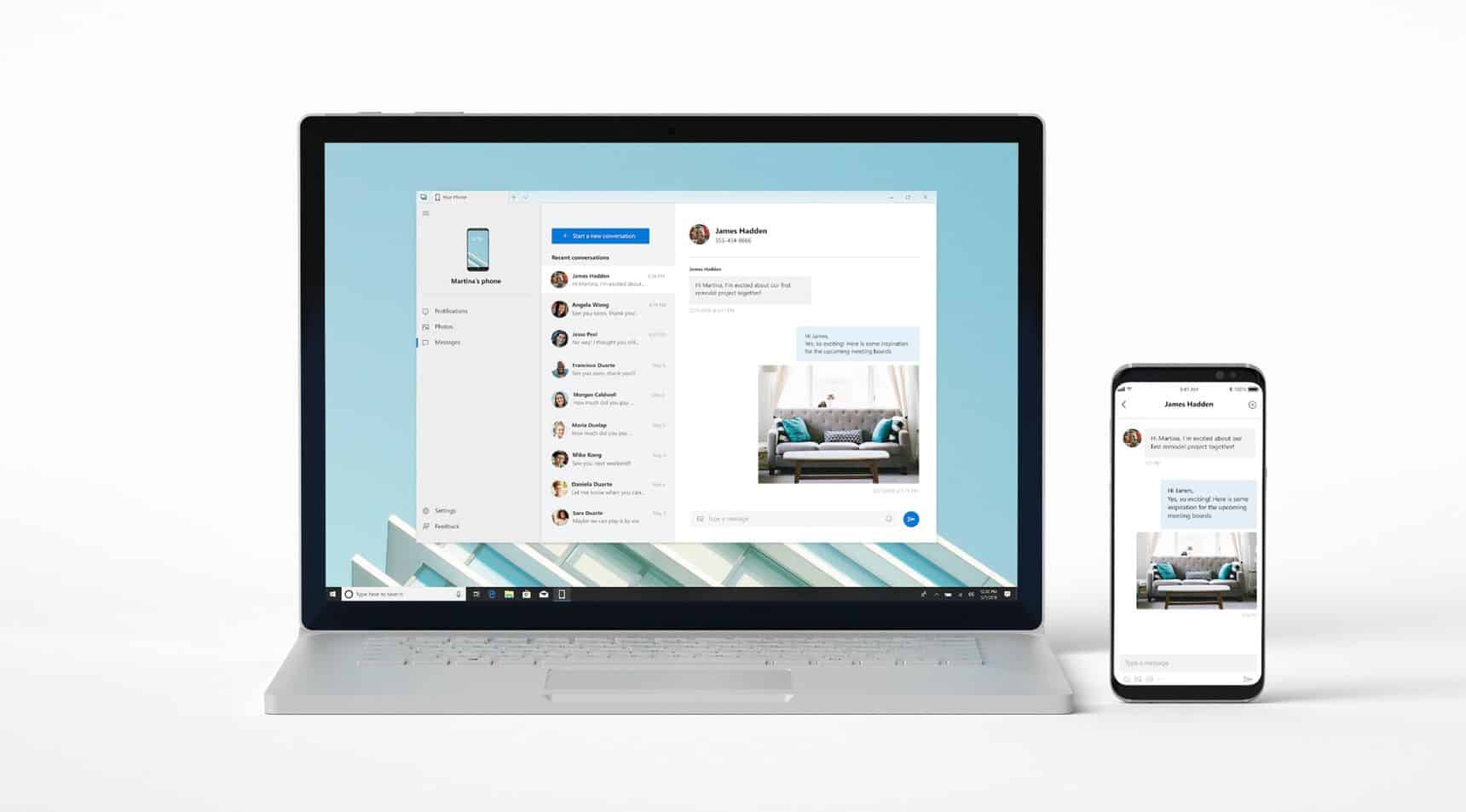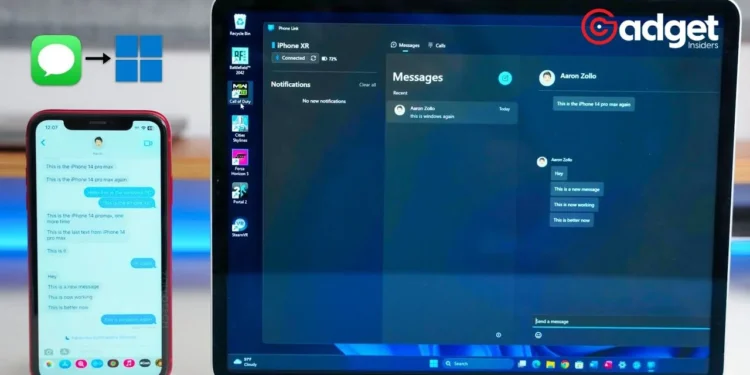In a groundbreaking move that’s set to redefine the boundaries of digital communication, Apple has ventured into previously uncharted waters by making its exclusive messaging service, iMessage, available on Microsoft Windows. This bold stride not only marks a significant leap towards inclusivity but also offers a glimmer of hope for seamless interoperability between the two tech behemoths.
In this feature, we delve into the nuances of this development, exploring its implications, setup, and a touch of controversy that accompanies it.
iMessage and Windows: A New Frontier
Long regarded as the pinnacle of messaging within Apple’s ecosystem, iMessage is famed for its end-to-end encryption, exclusive features, and the notorious blue bubbles that signify membership in the Apple club.
However, in a surprising twist, it’s been revealed that Windows users can now join the conversation, thanks to the integration with the Phone Link app for iOS. This integration represents a significant shift in Apple’s traditionally exclusive stance, potentially signaling a new era of cross-platform compatibility.
The Setup Process: A Step-by-Step Guide
For those eager to bridge their Apple and Microsoft devices, the process begins with ensuring that your iPhone is updated to at least iOS 14. Following this, the journey to interconnectedness involves downloading the Phone Link app on both your iPhone and Windows PC.
The setup process is relatively straightforward, requiring users to scan a QR code and enable Bluetooth pairing. Despite its simplicity, the setup heralds a monumental leap toward blurring the lines between these distinct ecosystems.
Bring the iMessage experience on Windows.https://t.co/AHEqyg7xoq
— Tech Times (@TechTimes_News) March 25, 2024
Navigating the Caveats
While the prospect of iMessage on Windows is undoubtedly enticing, it’s important to temper expectations. As reports suggest, the experience might lack the seamless nature of iMessage on Apple devices.
A notable limitation is the absence of past messages in the Phone Link app, along with the initial invisibility of messages from new contacts. These nuances underscore the complexities of marrying two distinct platforms, reminding us of the challenges that lie in achieving perfect harmony.
Security Concerns: A Cloud on the Horizon
The integration of iMessage with Windows isn’t without its controversies. Last year, alarms were raised over potential security vulnerabilities within the Phone Link app, with concerns about cyberstalkers exploiting the software to gain unauthorized access to iPhones.
This controversy sheds light on the intricate balance between innovation and privacy, urging both tech giants and users to tread carefully in this new digital landscape.
Looking Ahead: The Future of Cross-Platform Messaging
As we stand at the crossroads of technological convergence, the integration of iMessage on Windows is more than a mere feature update—it’s a testament to the evolving landscape of digital communication.
This development not only enhances the utility of the Phone Link app but also paves the way for a future where messages flow unimpeded by the barriers of operating systems.

In the realm of digital communication, the journey towards seamless interconnectivity is fraught with challenges, controversies, and compromises. Yet, the integration of iMessage and Windows stands as a beacon of hope, a symbol of a future where technology unites rather than divides.
As we venture further into this interconnected digital age, one can only wonder what other boundaries will be crossed in the quest for a truly unified digital experience.
A Bold Step Forward
Apple’s move to make iMessage available on Windows is a bold step towards a more inclusive and interconnected digital world. While it presents certain challenges and concerns, it undeniably opens up new possibilities for users across both platforms.
As we look to the future, the continued evolution of this feature will undoubtedly be a key area of interest for both tech enthusiasts and casual users alike, marking a significant milestone in the journey towards a more integrated digital ecosystem.










